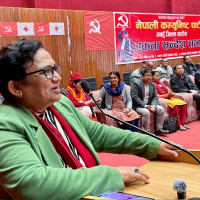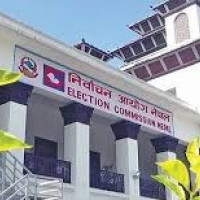- Friday, 12 December 2025
Nepal Airlines Needs Restructuring
For more than six decades, Nepal Airlines has flown with the weight of politics strapped to its wings. What was once meant to be a proud national carrier gradually turned into a symbol of how short-term political interests can grind a public institution into dysfunction. Now, with a government-appointed panel recommending that the airline be broken into three separate companies, the state appears ready to try again. The plan looks bold on paper, but Nepal has seen bold plans before. The real question is whether this reform will finally confront the political habits that have clipped the airline’s wings for far too long.
Nepal Airlines began its journey in 1958 as Royal Nepal Airlines, with a single Douglas DC-3 linking Kathmandu to the rest of the world. In the following decades, it expanded steadily, adding routes across Asia and carving out a respected position in the regional market. By the late 1970s, the airline dominated domestic travel and flew to several international destinations, giving Nepal visibility at a time when the country had limited global presence. For many Nepalis, the carrier was more than a mode of transport; it was a representation of national ambition.
Political turbulence
That era, however, feels like a different century. Since the political turbulence of the 1990s, the airline has cycled through a revolving door of leadership — sometimes multiple chiefs within a single year. Decisions that should have been shaped by market logic were instead steered by party committees and ministerial preferences. Entire departments were expanded not because operations demanded them but because someone needed to place a loyal worker. Over time, professional expertise was pushed aside, and the airline slowly drifted into the sort of stagnation that becomes harder to reverse each year it is allowed to continue.
The financial record reflects this decline. The audited accounts for FY 2022/23 show the company still running a loss modest on paper, yet part of a deeper pattern of accumulated deficits and chronic underperformance. Behind those numbers sits a far heavier burden: more than Rs 50 billion in debt-backed liabilities, much of it guaranteed by the state. A number of these borrowings date back to aircraft purchases and earlier “restructuring attempts” that promised transformation but delivered little except additional financial strain. It is telling that the latest reform proposal even suggests turning large portions of these loans into equity simply to keep the balance sheet from sinking further.
While the finances deteriorated, the airline lost ground in the market it once dominated. Today, Nepal Airlines carries only a small portion of international passengers passing through Tribhuvan International Airport, with foreign carriers commanding the majority of traffic. The fleet has shrunk to six serviceable aircraft—two A330s, two A320s and a pair of Twin Otters — supported by a workforce of around 1,400. For a national airline, this operational scale is surprisingly small, and the staff-to-aircraft ratio remains far higher than what would normally be expected for a fleet of this size.
The proposed restructuring aims to change that equation. The panel recommends forming three entities: one dedicated to international flights, another to ground handling, and a third—kept under full state ownership—to manage domestic routes. The international and ground-handling companies would be opened to the public through stock exchange listings, allowing for outside investment and, ideally, a measure of market discipline. Clearer financial separation is meant to reduce cross-subsidisation and force each unit to operate on transparent commercial terms.
There is logic to the plan. Ground handling, for example, has become one of the airline’s few reliable revenue sources, particularly with new contracts from carriers such as Thai Airways and Air India. That business already generates several billion rupees annually and could grow further with proper management. Listing the international and ground-handling companies on the exchange could create incentives for transparency, improved reporting and external scrutiny—elements that state-owned enterprises often struggle to achieve under political pressure.
But a structure alone cannot insulate an organisation from old habits. Nepal’s institutional history is littered with well-designed reforms that were quietly hollowed out by political interests the moment they threatened entrenched networks. The Nepal Electricity Authority, despite its restructuring and improved performance in recent years, still bends under political influence. The Nepal Oil Corporation operates at the mercy of ministerial decisions. Even the aviation regulator, which should be independent by definition, has not always escaped political swings. If these institutions cannot be fully insulated, why should Nepal Airlines be any different unless the political class makes a deliberate decision to step back?
Experiences from abroad offer clearer lessons. Air India’s troubled decades were marked by political interference, deferred decisions and mounting debt. Its turnaround began only after the Indian government divested its ownership and handed the airline back to the Tata Group, which has since embarked on a massive fleet renewal. Malaysia Airlines, after its own crisis, shrank its operations but strengthened its leadership by placing it under an independent holding company and removing political actors from day-to-day decisions. On the other hand, Pakistan International Airlines demonstrates what happens when political influence persists: reforms become announcements, and little more.
Independent board
For Nepal Airlines, the road forward will depend less on corporate diagrams and more on political will. Reform will succeed only if the airline is shielded from the very forces that weakened it. That means an independent board composed of qualified professionals, competitive recruitment for leadership positions, transparent reporting, and legally enforced limits on political appointments. It also requires a regulator capable of acting without fear or favour—something the aviation sector badly needs as Nepal seeks to raise safety and operational standards.
At its heart, this is not merely a story about planes or balance sheets. It is a story about whether Nepal can preserve an institution that once inspired national pride, despite years of mismanagement and neglect. The proposed reform offers a chance, perhaps the last meaningful one, to rebuild Nepal Airlines into a carrier that serves the country rather than the interests of whichever party happens to hold office at the time. If the government truly wants the airline to rise again, it must be willing to let professionals take the controls and resist the urge to intervene every time the political winds shift. Only then can Nepal Airlines reclaim not just its place in the skies, but its place in the national imagination.
(Basnet is currently studying MSc in Air Transport Management at the University of Surrey, United Kingdom.)




-square-thumb.jpg)


-square-thumb.jpg)








